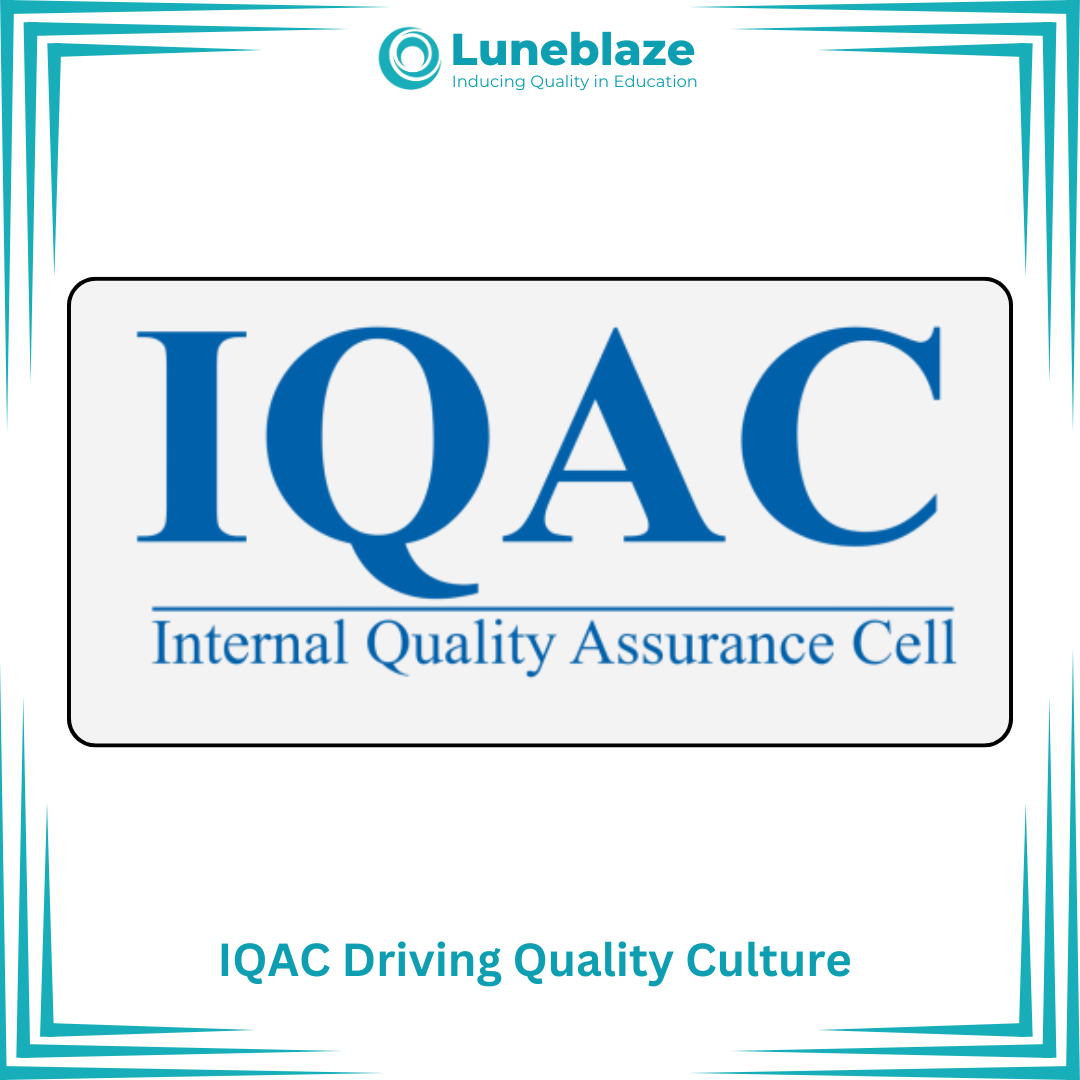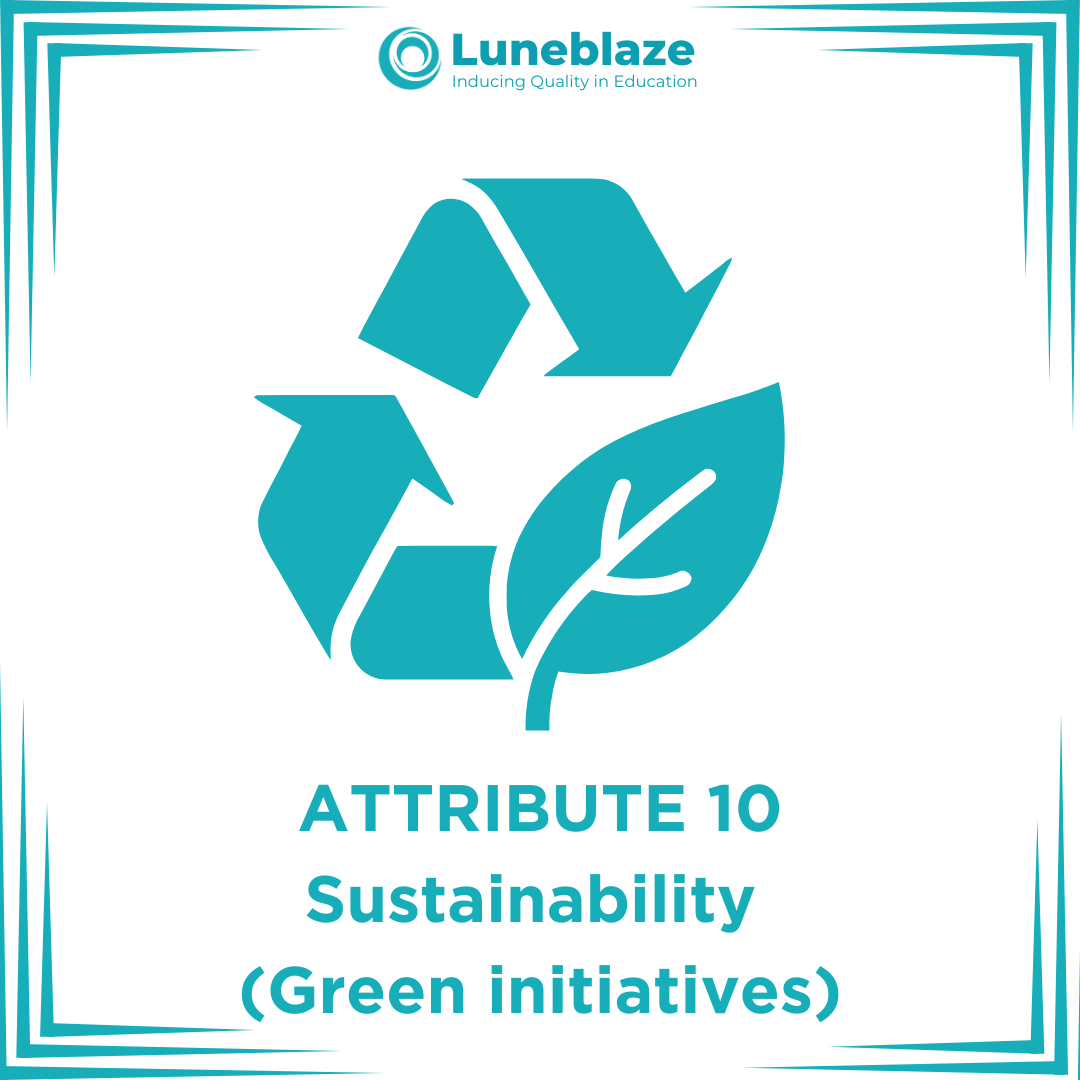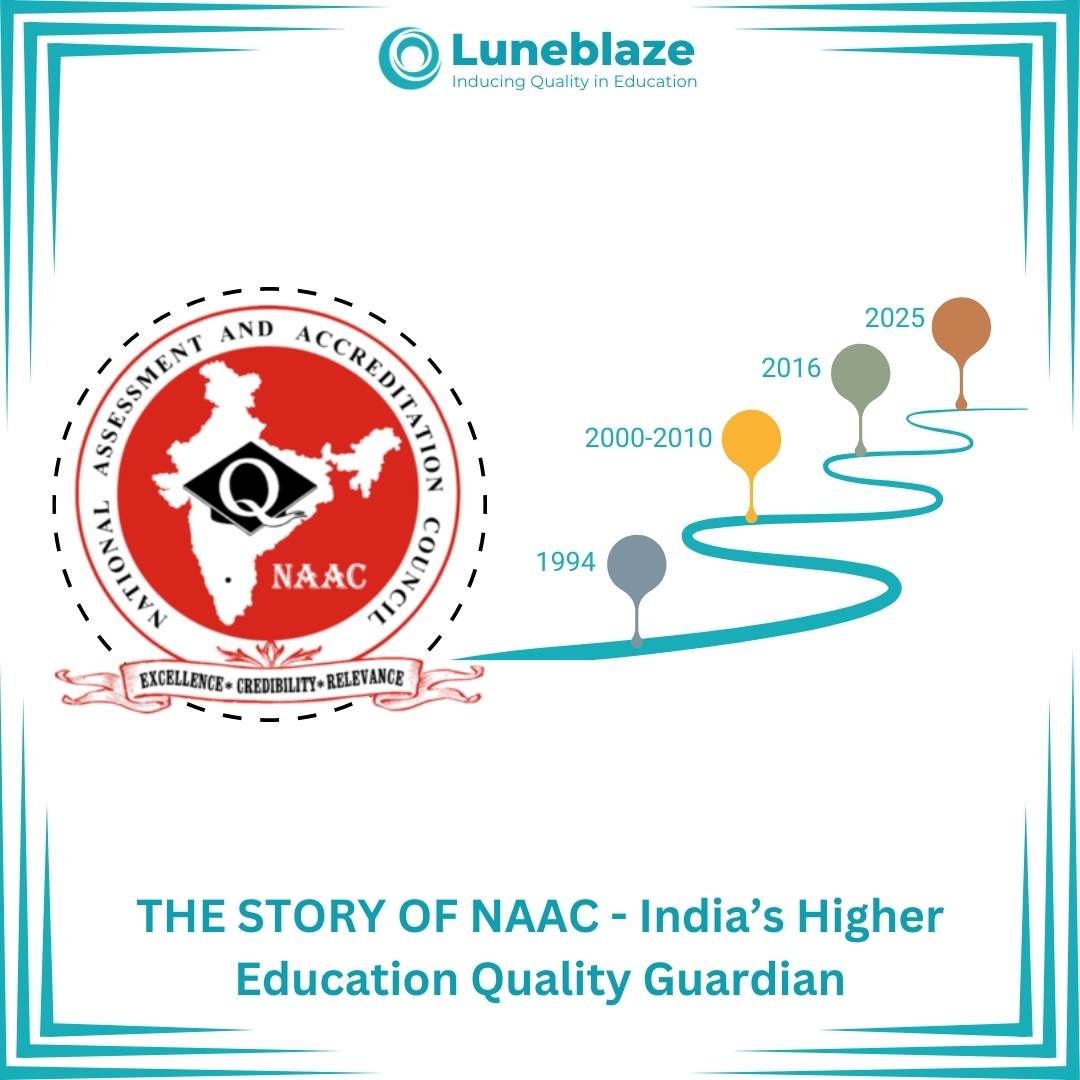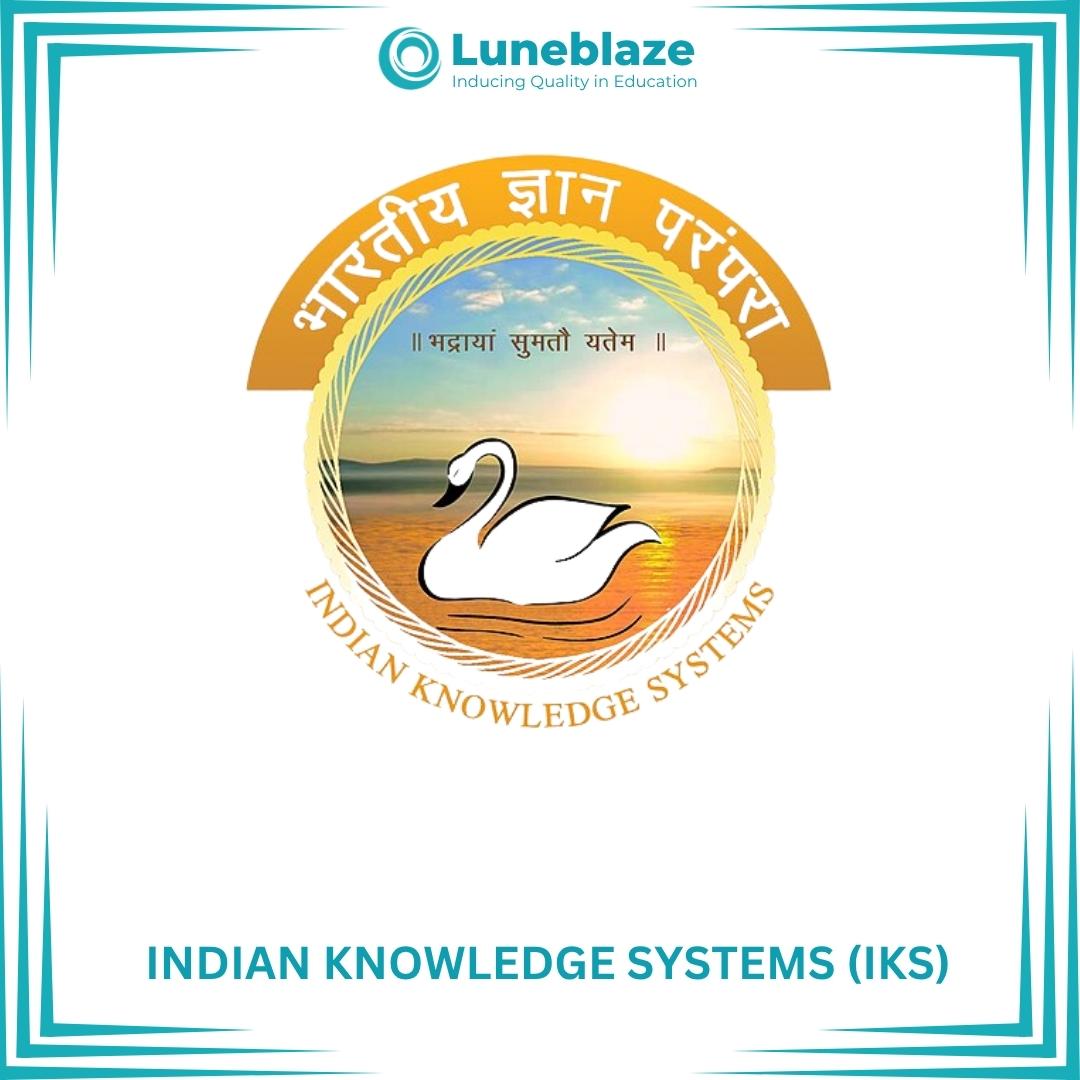Empowering Educational Excellence: NAAC and SQAA Accreditations Unveiled
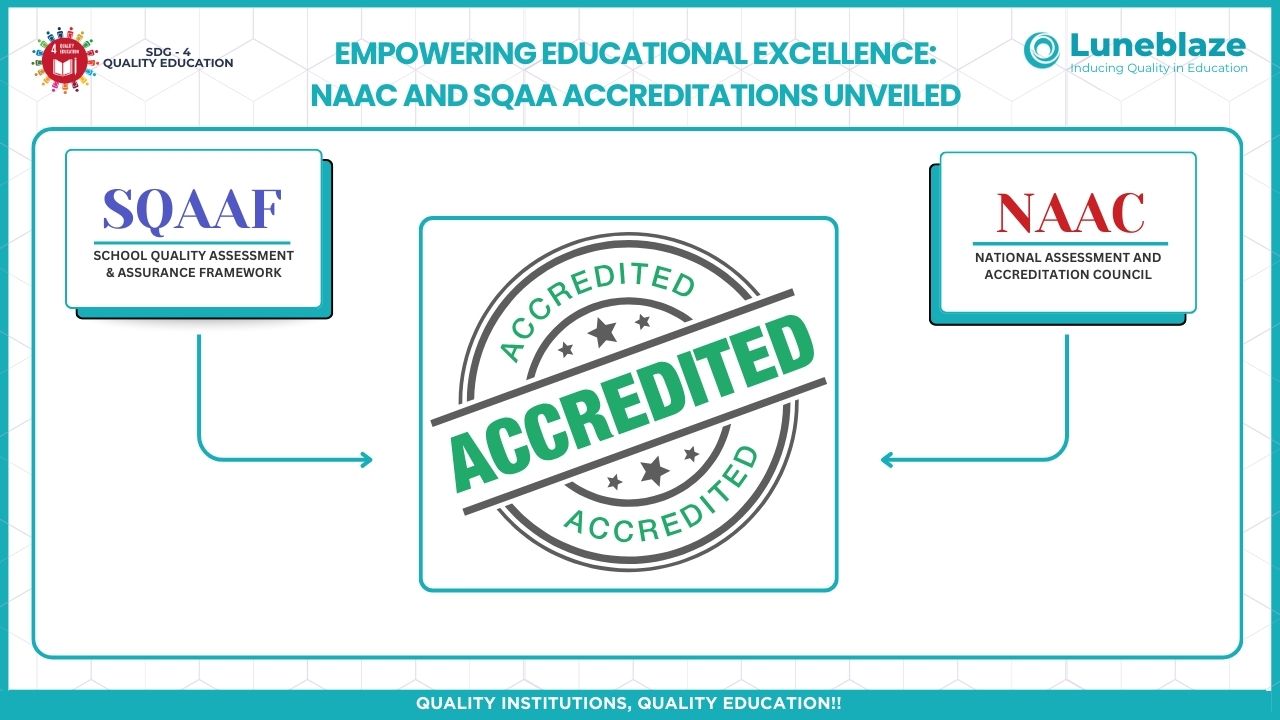
Oct 23, 2023
In the rapidly evolving landscape of Indian education, accreditation and quality assurance have emerged as essential mechanisms for driving institutional improvement and ensuring student-centric outcomes. Two of the most transformative initiatives in this domain are the National Assessment and Accreditation Council (NAAC) and the School Quality Assessment and Accreditation Framework (SQAAF), introduced under the vision of the National Education Policy (NEP) 2020. This blog delves deeply into how these accreditation systems serve as pillars for empowering educational excellence across the school and higher education spectrum.
Why Accreditation Matters
Accreditation in education acts as a benchmark for quality. It is a formal recognition that an institution meets or exceeds specific standards of excellence. For parents, students, and policymakers, accreditation assures trust. For institutions, it is a tool for introspection, self-improvement, and strategic growth.
NAAC and SQAAF aim to instil a culture of continuous quality enhancement through structured evaluation mechanisms that emphasize learner outcomes, innovation, governance, inclusivity, and institutional accountability.
NAAC: Setting Benchmarks in Higher Education
Established by the University Grants Commission (UGC) in 1994, NAAC is a pioneering institution that evaluates the quality of colleges and universities in India. It grades institutions on multiple criteria, including curricular aspects, teaching-learning processes, research, infrastructure, student support services, and governance.
10 Key Attributes of NAAC:
Curriculum Design (Input): Focuses on outcome-based education with clearly defined Program Outcomes (POs), Program Specific Outcomes (PSOs), and Course Outcomes (COs). Also includes curriculum flexibility, industry relevance, and integration of the Indian Knowledge System.
Faculty Resources (Input): Assesses recruitment transparency, adherence to UGC norms, diversity in faculty, retention rates, and faculty development through training and fellowships.
Infrastructure (Input): Includes evaluation of physical infrastructure (e.g., classrooms, labs, hostels), IT and e-learning infrastructure, research facilities, and Divyangjan (differently-abled) friendly amenities.
Financial Resources & Management (Input): Covers sources and amounts of capital and revenue income, capital and revenue expenditure, strategies for financial sustainability, and internal/external audits.
Learning & Teaching (Process): Analyzes pedagogical practices such as group and inquiry-based learning, use of technology, diversity support mechanisms, and learning management systems.
Extended Curricular Engagements (Process): Focuses on the presence and activities of student clubs, cultural events, mental health support, sports, and community outreach programs including Unnat Bharat Abhiyan (UBA).
Governance and Administration (Process): Evaluates institutional planning through development plans, implementation of e-governance, welfare schemes for staff and students, grievance redressal mechanisms, quality assurance systems, and leadership effectiveness.
Student Outcomes (Outcome): Measures placement rates, higher education progression, self-employment/entrepreneurship, student awards, enrollment ratios, graduation rates, and alumni feedback.
Research and Innovation (Outcome): Covers externally funded research, quality and number of publications, IPR generation, interdisciplinary and international collaborations, and startup incubation.
Sustainability Outcomes (Outcome): Assesses green initiatives such as water and waste management, renewable energy adoption, green audits, and collaborations with NGOs and industries for environmental and social sustainability.
Key Features of NAAC Accreditation:
Focus on internal quality assurance systems and learner-centric approaches
A multidimensional framework involving self-study reports, peer assessments, and external evaluations
Accreditation awarded on a binary scale (Accredited/Not Accredited)
Regular reassessment cycles for ensuring institutional accountability and sustained improvement
NAAC accreditation has a direct impact on:
Eligibility for government grants and autonomy status
Global recognition and rankings
Enhanced institutional credibility among stakeholders
Structured roadmap for academic excellence and research quality
SQAAF: Transforming School Education Quality
While NAAC serves the higher education ecosystem, CBSE's School Quality Assessment and Accreditation Framework (SQAAF) addresses the K-12 education sector. Aligned with NEP 2020, SQAAF envisions student-centric, inclusive, and futuristic schools that demonstrate excellence across all domains.
The Seven Pillars of SQAAF: The School Quality Assessment and Assurance Framework (SQAAF) by CBSE assesses schools through seven key domains:
1. Curriculum, Pedagogy and Assessment (40% weightage): Focuses on curriculum alignment with NEP 2020 and NCF, student-centric teaching, inclusive education, diverse assessments, and skill development.
2. Infrastructure: Evaluates adequacy, safety, and functionality of school facilities to support learning and accessibility.
3. Human Resources: Assesses staff qualifications, recruitment, training, and teacher-student ratios, with emphasis on continuous professional development.
4. Inclusive Practices: Promotes equity through support for diverse learners, inclusive pedagogy, infrastructure, and parental involvement.
5. Management and Governance: Reviews school administration, planning, compliance, and the use of digital tools for effective operations.
6. Leadership: Measures vision, innovation, mentoring, and internal quality assurance led by school leadership.
7. Beneficiary Satisfaction: Captures stakeholder feedback to enhance responsiveness and collaboration.
Each pillar is assessed against measurable quality indicators, encouraging schools to adopt a systemic, evidence-based approach to improvement.
Benefits of SQAAF Accreditation:
Recognition as a progressive and NEP-aligned institution
Encourages a culture of data-driven decision-making and quality consciousness
Enhances trust among parents and communities
Provides a platform for collaboration and sharing of best practices
Alignment with NEP 2020: A Unified Vision for Quality
Both NAAC and SQAAF are deeply rooted in the transformative ethos of NEP 2020. The policy envisions an education system that is flexible, multidisciplinary, inclusive, and rooted in Indian ethos, while also being globally competitive.
The NEP emphasizes the creation of independent accreditation bodies and promotes a "light but tight" regulatory framework that ensures transparency, autonomy, and continuous enhancement. NAAC and SQAAF embody this vision by functioning not as punitive agencies but as facilitators of quality enhancement.
Towards a Culture of Excellence
Accreditation is not a one-time exercise but a journey toward institutional maturity. It empowers schools and colleges to introspect, innovate, and evolve. With NAAC and SQAAF, India is building a robust quality assurance ecosystem that promotes academic excellence, inclusive growth, and stakeholder trust.
As institutions embrace these frameworks, they are better positioned to fulfil the broader goals of education: character development, holistic learning, and national development.
In Conclusion
Empowering educational excellence through NAAC (National Assessment and Accreditation Council) and SQAAF (School Quality Assessment and Accreditation Framework) aligns directly with SDG 4 by emphasizing the importance of quality education. These frameworks are not merely regulatory tools; they embody a shared vision for transforming education systems to be more inclusive, equitable, and effective.
By embedding accountability, innovation, and learner-centric approaches, NAAC and SQAAF uphold the core principles of SDG 4. They help institutions measure and improve educational quality, thereby fostering environments where every student has the opportunity to thrive, regardless of background. This commitment supports SDG 4's targets such as enhancing learning outcomes, promoting inclusive education, and ensuring lifelong learning opportunities through a culture of continuous improvement and excellence.
To support institutions in their accreditation journey, Luneblaze offers AI-powered accreditation solutions for schools and colleges, streamlining SQAAF and NAAC processes with automated documentation, audits, and expert consultancy, trusted by over 100 institutions since 2017.
Together, let’s raise educational standards. Reach us at: contact@luneblaze.com
Trusted by
100+
Institutions
worldwide
since 2017
Get started with Accreditation Excellence
Explore how our AI-enabled accreditation solution simplifies the accreditation journey

